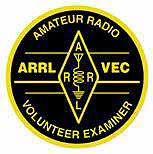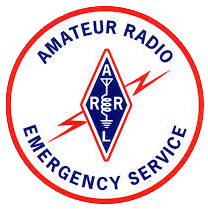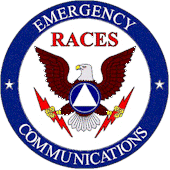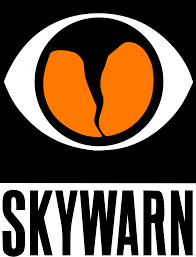Will We Or Won't We (Deploy)?
- Details
- Hits: 61
During Field Day (2025) a discussion of work being done outfitting the WGARS communications trailer digressed into a debate of whether Amateur Radio operators would ever really be deployed in a local emergency. One operator insisted it would never happen, while another acknowledged the probability was low, but it was not outside the realm of possibility.
The discussion was mostly centered around the fact that post 911/Katrina government communications systems are better integrated, allow various levels of inter-department and inter-agency communications coupled with infrastructure redundancy. All of this is true. The days of operators acting as relays between incompatible public service systems like fire and police are likely gone. Likewise, we'll probably not be shadowing a Public Safety person. That's a good thing for the citizenry and it also diminishes the need for our services. Diminishes, but not eliminates.
We have discussed the need to redefine our mission in other presentations, and even pointed out some likely future uses for Amateur Radio. These uses include embedding with other responder groups and providing services to those directly impacted by the emergency.
For instance, damage assessment teams sent out immediately following a disaster can benefit from Amateur Radio, which can use APRS for tracking teams and communicating non-emergency traffic - freeing the Public Service radio system for emergency traffic. Embedding with either non-governmental organizations (NGOs) or other teams may require training in their area of service however.
Health and Welfare Traffic is probably the primary mission for Amateur Radio. Public Service systems are tactical in nature, and don't lend themselves to passing messages between family members. While this may not in itself be Emergency Communications, it does help minimize the burden on First Responders dealing with efforts by family and friends to locate and communicate with others in the disaster area.
Local tactical and traffic nets, whether through an operational repeater or simplex on HF or VHF/UHF, can link neighborhoods, allowing family and friends to check on one another. Relays to HF traffic nets can allow traffic to be passed to and from anywhere in the world.
We have discussed the importance of some digital modes, particularly Winlink, for passing information in and out of the disaster area. Winlink, allows for sending and receiving email anywhere in the world utilizing HF and also locally, point-to-point, using VHF nodes. Other digital modes may be used for handling Radiograms.
Finally, emergencies, by definition, are unplanned and are a result of the unexpected. History is replete with incidents nobody saw coming. So, despite the diminished likelihood of a major failure of Public Service Radio, we could still be deployed in the same manner we may have been thirty years ago. But if not, we still have plenty we can and should do if disaster strikes.
Deployable Antenna Support Systems
- Details
- Hits: 1819
We've spent a lot of time discussing training for deployment, what personal supplies we'd bring to a deployment, and what radio gear we would bring along, but what to do for antennas?
Yes, roll-up or J-pole antennas have been discussed often for years; to a lesser extent we have discussed low-flying HF (NVIS) antennas. We never know where our deployments may send us, and in many cases trees or other antenna supports may be some distance away, so extra coax and/or rope will be handy in those instances.
NTS and ICS-213 Messages
- Details
- Hits: 4237
Note: Images may be clicked for enlarged view
 The National Traffic System (NTS) has provided a means of passing messages (usually referred to as traffic) via Radiograms for almost as long as amateur radio has existed. Before long distance telephone was common, and until the
The National Traffic System (NTS) has provided a means of passing messages (usually referred to as traffic) via Radiograms for almost as long as amateur radio has existed. Before long distance telephone was common, and until the
QRP And Amateur Radio
- Details
- Hits: 0
While many operators tend to operate using the 100W or 200W their radio provides, and yet others use external amplifiers to run hundreds, even more than 1KW, there are others who operate at the other end of the spectrum, 5-10 Watts.
QRP operation is often practiced by operators participating in Parks On The Air (POTA) or Summits On The Air (SOTA), who are often hiking or backpacking their equipment to the operating location, carrying their power source with them. Naturally, packing a Marine Battery would be a bit of a challenge, so smaller and lighter batteries with lower power capacity are used.
Should You Use UTC Or Local Time?
- Details
- Hits: 910
The use of "local", Universal Time Coordinated (UTC/Zulu/GMT), or a specific time zone (like Eastern) when specifying the time a message was created or a net is scheduled, or even passing the current time over the net can create confusion for all involved, especially when nets or message traffic cross time zones.
Here, in Carroll County, Georgia, we are close enough to the Central time zone that their and our VHF net times are "one hour off" from each other.
Other Benefits Of Field Day
- Details
- Hits: 318
We've discussed the usefulness of Field Day as an EMCOMM training exercise as well as a fun weekend event. We've talked about the benefits of having deployment ready equipment, especially antennas and patch cables. The same equipment used on field day can be easily deployed to ad-hoc shelters, hospitals, or other locations. Field Day preparation, setup, and operation allows for testing, debugging, and finally operating equipment, ensuring the equipment is actually functional and ready for use during an emergency.
There are other benefits of Field Day beyond those above, some only marginally applicable to Emergency Communications, but still very useful. These include educational sessions and, in some cases, other activities.
Standardized Radio Memories
- Details
- Hits: 2268
ARES, RACES, SATERN, MARS, and virtually every other Amateur Radio organization will have a plan for nets and tactical activities, including a range of frequencies (spanning several bands) to be used for different modes of operation.
Just as there are a range of entities using a range of frequencies across many bands implementing multiple modes, a typical Amateur Radio Operator will own a collection of radios with a variety of differing capabilities. While not all radios will operate across all the bands and operate in all the modes, there is often quite a bit of overlap of functionality.
Prowords
- Details
- Hits: 4018
Like the use of standard phonetics, the use of standard Procedure Words (usually referred to as PROWORDS) helps to ensure the clear conveyance of information between radio operators.
Like phonetics, there is a standard set of prowords used in communications, increasing the probability of understanding even when hearing only a part of the proword during noisy conditions.
Some prowords are more commonly used than others, and some prowords, while more expedient, can be a little confusing because they aren't commonly used in Amateur Radio.
Here are some of the most common prowords you'll hear on formal nets, especially when passing formal traffic:
Wilderness Protocol and LiTZ
- Details
- Hits: 4960
The Wilderness Protocol, like many Amateur Radio practices, is not part of FCC regulations or law, merely a generally agreed upon practice. The purpose of the protocol is to provide a way for operators outside of repeater range and in need of assistance to make contact with other operators to request assistance.
Although it could, and should, be practiced under any conditions, it was originally designed as a tool for hikers, campers, and those who work in wilderness areas.
Operators, especially those in wilderness areas, would monitor calling frequencies on various bands (146.52 MHz, 52.525, 223.5, 446.0 and 1294.5 MHz) at the top of the hour. Ideally listeners would monitor from a few minutes before
Page 1 of 8




